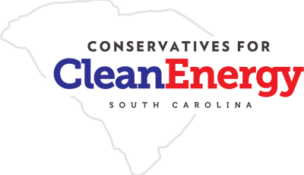Viewpoint: 5 facts you need to know about solar in S.C.
Opinion //February 22, 2021//
 Fact 1: Solar Choice has to treat all Dominion Energy South Carolina customers fairly. That means the 99% who do not choose solar and the 1% who do.
Fact 1: Solar Choice has to treat all Dominion Energy South Carolina customers fairly. That means the 99% who do not choose solar and the 1% who do.
The proposed Solar Choice Metering Tariff builds on Act 62, a state law that empowers electric customers to make their own decisions about the installation of solar panels on their homes or businesses. The law was very intentional in its efforts to make sure customers do not suffer from subsidization when solar is added to the system — basically that one group of customers doesn’t unfairly pay higher prices to benefit another group of customers.
If the good Lord could provide all our system needs through solar and other renewables, I’d take it and retire all coal. But solar has its limitations.
You can think of it this way: Would you buy a car that runs only 25% of the time? That’s exactly what’s happening with the intermittent generation of solar on the grid. We can’t generate solar power on all those cold, dreary days like we had in February, but all of our customers — those with solar and those without — count on us to provide uninterrupted service, even when the sun isn’t shining. The reality is that solar customers on our system still rely on non-solar generating sources 75% of the time, and it’s only fair that they share the costs.
Fact 2: The intent of South Carolina solar legislation was to establish rules that fairly allocate costs and benefits among all customers to eliminate any cost shift or subsidization.
Net metering is a special metering and billing agreement between a utility and customers that allows credit to customers for excess electricity they generate with renewable energy connected to the utility’s grid.
The approximately 11,000 Dominion Energy customers in South Carolina who use solar on their property also export a lot of it back to the grid. This means about 740,000 non-solar customers have to pay for maintaining power lines, generation stations and all other associated costs — while also paying for the more cost-efficient energy their utility is producing.
This is generally subsidization. We agree with solar developers on the importance of solar growth in South Carolina, but we can’t forget about so many who are struggling financially. We heard them during our recent regulatory rate review, and we paused that process. These are the same people we’re trying to protect from being forced to foot the bill through unfair subsidization. We recognize that certain intervenors would prefer that solar subsidies continue in full, but the law does not allow for that.
![src=]() Fact 3: The proposed Solar Choice tariff will not discourage South Carolinians from choosing solar.
Fact 3: The proposed Solar Choice tariff will not discourage South Carolinians from choosing solar.
The benefits are clear for customers who have the means to choose solar. With the proposed tariff, solar customers can take advantage of a special time-of-use rate plan, which encourages them to conserve energy. It will also align with how the grid really operates. Customers would get a lower rate during off-peak time, which is actually most of the time. These customers would get rates below $0.07 per kWh. This is a big win for customers who want more freedom and control over their bill.
Fact 4: Solar Choice encourages solar development in South Carolina.
We have over 1,000 megawatts of solar on our electric generation system. That means solar produces more than any single generation unit we have. We have been recognized by the Southern Alliance for Clean Energy SACE as a top-performing utility for installed solar for the past three years. Solar is part of our clean energy future, but we can’t snap our fingers and get there overnight. As technology continues to improve and solar costs continue to come down, solar will be more accessible to more people. We’re leaders in a clean energy future for South Carolina, and solar is a big part of it.
FACT 5: Dominion Energy is working hard to achieve net zero carbon and methane emissions across our footprint by 2050, and solar energy plays a big part in our plan.
Renewable energy, particularly solar, is playing a key role as we evolve to a more modern, resilient and clean energy grid.
With solar generation accessible to the industry on a large scale, as well as to the consumer on their rooftops, we’re off to a great start. Dominion Energy is ranked second in the region for solar generation on our system in South Carolina.
But, we must strike a balance between customers who choose solar, and those who don’t. We need to ensure that no one group is forced to unfairly subsidize the cost of choices made by another segment of our customer base.
Keller Kissam is president of electric operations for Dominion Energy South Carolina.
s













